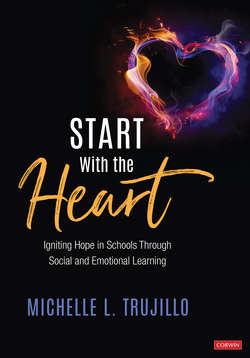Читать книгу Start With the Heart - Michelle L. Trujillo - Страница 18
На сайте Литреса книга снята с продажи.
Many Administrators and Teachers Do Not Look Like Our Students
ОглавлениеKat and Charlie were students living lives outside of school unlike my own, or that of my staff. This, in and of itself, is another challenge facing the educational system today, making it more difficult to create connections or better understand the human beings with whom we work. An undeniable fact in our nation is that many administrators and teachers do not look like their students. We often don’t come from the same lifestyles or experience the same hardships; we cannot claim the same familial experiences or customs. As a result, we may lack cultural or linguistic competence or can have implicit biases—beliefs or attitudes against a person or group of people of which we are completely unaware. In this instance, first and foremost, we must acknowledge this reality. Michelle Alexander (2012), author of The New Jim Crow, notes that, “Decades of cognitive bias research demonstrates that both unconscious and conscious biases lead to discriminatory actions, even when an individual does not want to discriminate” (p. 106). Sometimes this acknowledgment can be as simple as admitting to our students that we may not understand their perspectives or experiences and therefore would appreciate their guidance.
Having this type of awareness schoolwide is imperative as implementation of social, emotional, and academic development (SEAD) philosophies and programs proceed, because such efforts will be ineffective if the potential for bias and discrimination is ignored. In fact, Gregory and Fergus (2017) suggest that “the prevailing understanding of SEL [social and emotional learning] is ‘colorblind’ and doesn’t take power, privilege, and culture into account” (p. 118).
